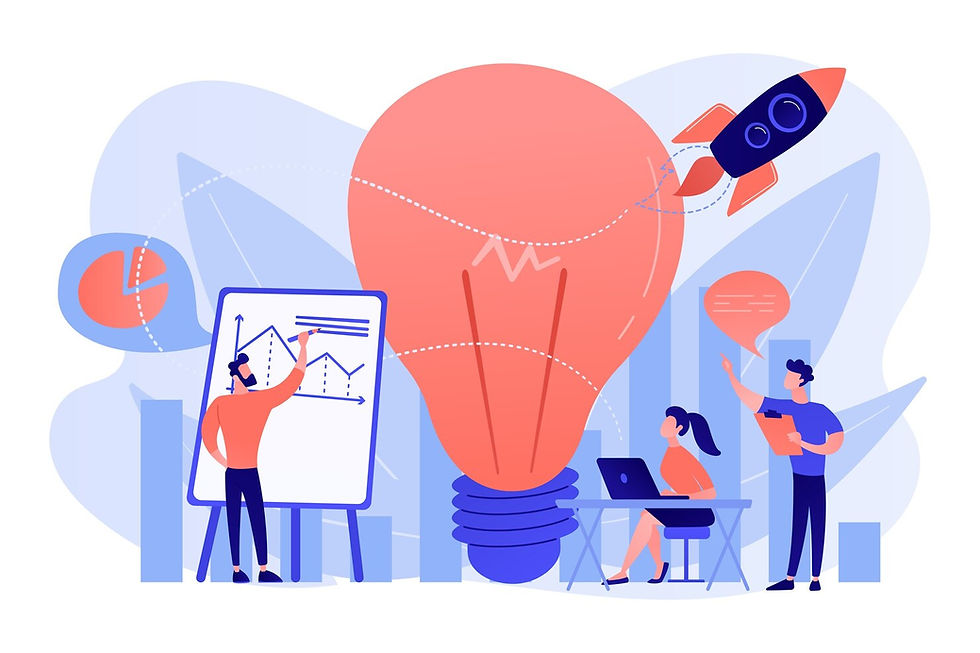Digital Twin ROI: A Comprehensive Cost-Benefit Analysis of 3D Reconstruction in Construction Projects
- Ritika Chhikara
- Oct 7, 2024
- 3 min read
Updated: Mar 6

The adoption of digital twin technology in construction is transforming the way projects are planned, executed, and maintained. By creating a virtual replica of physical assets, digital twins enable real-time monitoring, predictive analytics, and seamless collaboration. However, decision-makers often need to understand the return on investment (ROI) of implementing such advanced technologies. This blog provides a comprehensive cost-benefit analysis of 3D reconstruction in construction projects, backed by real case studies, specific metrics, and an interactive ROI calculator to help you make informed decisions.
1. Understanding Digital Twin ROI in Construction
Digital twins are not just a futuristic concept—they are a practical tool delivering measurable benefits. According to Forrester Research, 55% of global software decision-makers are already adopting digital twins for design, construction, and maintenance purposes. The ROI of digital twins stems from:
Time savings: Faster project delivery through optimized workflows.
Cost reduction: Minimized rework and improved resource allocation.
Risk mitigation: Early detection of design clashes and safety hazards.
Long-term value: Enhanced asset management and lifecycle optimization.
2. Initial Setup Costs
Implementing digital twin technology involves several upfront investments:
Component | Cost Range | Example |
Hardware | 3,500−50,000 | Matterport’s Pro2 camera, advanced LiDAR scanners |
Software | 2,000−10,000 annually | Autodesk Revit, Siemens Digital Twin |
Training | 500−2,000 per employee | Reskilling employees to use digital twin tools |
3. Maintenance and Operational Costs
Maintaining a digital twin requires ongoing investments:
Component | Cost Range | Description |
Data Storage | 0.02−0.10 per GB per month | Cloud-based storage solutions like AWS or Azure |
IoT Sensor Upkeep | 1,000−5,000 annually | Regular maintenance and replacement of sensors |
Software Updates | 10-20% of initial software cost | Annual licensing renewals and updates |
4. Quantifiable Benefits
The ROI of digital twins is driven by tangible and intangible benefits:
Time Savings
Case Study: Swinerton, a San Francisco-based construction firm, used Matterport’s digital twin technology to reduce client travel time by 100% and cut MEP and architect travel time by 50%. This saved four weeks of potential delays.
Metric: Digital twins can reduce project timelines by 20-30% through optimized workflows and real-time progress tracking.
Cost Reduction
Case Study: Corgan, an architecture firm, used digital twins to document a $1.6B project at LAX, reducing scan time by 50% and saving thousands of dollars in rework.
Metric: Clash detection and constructability analysis can reduce rework costs by 10-15%.
Risk Mitigation
Case Study: Takenaka Corporation leveraged digital twins for remote inspections, saving 90% of the time required for traditional 3D laser scans.
Metric: Early hazard detection can reduce safety incidents by 20-30%.
Long-Term Value
Case Study: Digital twins enable predictive maintenance, reducing lifecycle costs by 10-20%.
Metric: Facilities managers report 15-25% improvements in energy efficiency and operational performance.
5. Interactive ROI Calculator
To help you estimate the ROI of digital twin implementation, we’ve developed an interactive ROI calculator. Input your project details, such as:
Project size: Square footage or number of assets.
Initial costs: Hardware, software, and training expenses.
Expected benefits: Time savings, cost reductions, and risk mitigation.
The calculator will provide a customized ROI estimate, helping you make data-driven decisions.
6. Challenges and Mitigation Strategies
While digital twins offer significant benefits, challenges include:
Data integration: Ensuring seamless interoperability between BIM, IoT, and analytics platforms.
Initial costs: High upfront investments can deter adoption. However, long-term savings often outweigh these costs.
Employee resistance: Training programs and change management strategies are essential for successful adoption.
7. Future Trends and Recommendations
The future of digital twins in construction is bright, with advancements in AI, 5G connectivity, and blockchain enhancing their capabilities. To maximize ROI, we recommend:
Start small: Pilot digital twin technology on a single project to assess its impact.
Invest in training: Equip your team with the skills to leverage digital twins effectively.
Collaborate with stakeholders: Ensure all parties are aligned on goals and workflows.
Conclusion
Digital twin technology is a game-changer for the construction industry, offering significant ROI through time savings, cost reductions, and risk mitigation. By understanding the costs and benefits and leveraging real-world case studies, decision-makers can confidently invest in this transformative technology.
For a customized ROI estimate, try our interactive calculator and take the first step toward building smarter, more efficient projects.




Komentarze